Today’s Current Affairs: 14th November 2025 for UPSC IAS exams, State PSC exams, SSC CGL, State SSC, RRB, Railways, Banking Exam & IBPS, etc
Table of Contents
Hydrogen Valley Innovation Clusters:
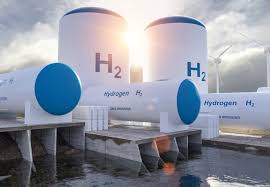
The Union Minister of State (Independent Charge) for Science and Technology announced that four Hydrogen Valley Innovation Clusters (HVICs) are being developed across the country.
- Hydrogen Valley Innovation Clusters are being developed across the country to demonstrate the full green hydrogen value chain — from production and storage to transport and utilization.
- Total investment of ₹485 crore.
- The HVIC project is aimed at “building a local hydrogen ecosystem by connecting supply and demand across sectors like transport, industry, and energy, while also fostering research, innovation, and skills.
- These clusters originally conceptualized by the Department of Science and Technology, and now integrated under National Green Hydrogen Mission (NGHM).
- These four Hydrogen Valleys are coming up in Pune, Jodhpur, Bhubaneshwar and Kerala.
Botswana : In News

India and Botswana formally announced the translocation of eight Cheetahs from the African nation during the State visit of President of India.
- Botswana is a landlocked country located in the center of Southern Africa.
- It is bordered by four countries – Namibia to the north and west, South Africa to the south and southeast, Zimbabwe to the northeast, and it also borders Zambia to the north.
- Botswana is a member of the United Nations, the Commonwealth, the African Union, and the Southern African Development Community.
- Capital City: Gaborone
- The country is divided into three main environmental regions.
- Hardveld Region: It consists of rocky hill ranges and areas of shallow sand cover in eastern Botswana.
- Sandveld Region: It is the area of deep Kalahari sand covering the rest of the country.
- It is superimposed on the northern sandveld in the lowest part of the Kalahari Basin.
- The main rivers in Botswana are Okavango, Chobe, Limpopo and Molopo.
National Database for Emergency Management:

The Ministry of Road Transport and has made it mandatory for all Detailed Project Reports of highway projects to include analysis using the National Database for Emergency Management (NDEM).
- National Database for Emergency Management is a unique Geo-portal to disseminate space-based inputs along with services of forecasting organizations addressing all natural disasters in India.
- It is a national repository of multi-scale geospatial database coupled with decision support system tools.
- It is developed by the Indian Space Research Organisation (ISRO) under the guidance of the National Disaster Management Authority (NDMA).
- The NDEM portal is maintained by the National Remote Sensing Centre (NRSC).
- NDEM services have been operationalised since 2013 providing timely information along with disaster specific products for effective decision making.
- National Database for Emergency Management provides multi-temporal satellite data and thematic layers that help identify areas vulnerable to floods, landslides, earthquakes, and other natural hazards.
- It also offers decision-support tools for monitoring and managing such hazards.
- It is a unique and homogenous database served for entire country with essential database elements for addressing emergency/disaster management in the country.
- It assists the decision makers, disaster management officials of all States/UTs, NDRF/SDRF for preparedness, hazard/risk zonation, damage assessment and emergency response.
DRISHTI System:
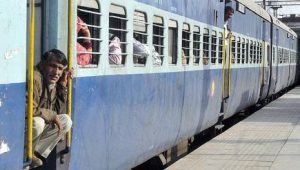
The Indian Railways is planning to install a new AI-based Locking Monitoring System called – ‘DRISHTI’
- It is an AI-Based Freight Wagon Locking Monitoring System.
- The Northeast Frontier Railway (NFR) joined hands with the Indian Institute of Technology Guwahati Technology Innovation and Development Foundation (IITG TIDF) to develop the system.
- The DRISHTI system aims to tackle operational challenges in identifying unlocked or tampered doors on moving freight wagons, a persistent safety and security issue in rail logistics.
- The new AI-based solution is designed to provide real-time monitoring, detect anomalies in door locking mechanisms, and automatically generate alerts without disrupting train movement.
- It uses AI-powered cameras and sensors strategically installed to capture and analyse door positions and locking conditions.
- It uses advanced computer vision and machine learning technology for the detection purposes.
- DRISHTI is expected to improve freight security, enhance wagon sealing integrity, and reduce dependency on manual inspection processes.
- Plans are underway to further refine and scale the system for wider adoption across NFR’s freight corridors after successful completion of ongoing trials.
Rare Earth Hypothesis:
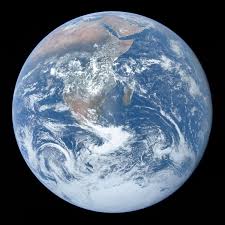
New insights from exoplanet studies revive and reshape the debate over the Rare Earth Hypothesis.
- The Rare Earth hypothesis posits that the emergence of complex life on planets outside Earth is highly unlikely due to a unique combination of specific conditions required for such life to thrive.
- Proposed by paleontologist Peter Ward and astronomer Donald Brownlee in 2000, the hypothesis suggests that while microbial life may be abundant throughout the universe, the prerequisites for complex organisms are exceedingly rare.
- Key factors influencing the probability of complex life include the planet’s location within its galaxy, the type and distance of its star, geological characteristics like size and tectonic activity, and the presence of a large moon.
- This perspective contrasts sharply with the principle of mediocrity, which suggests that Earth is just one of many planets capable of supporting complex life.
- The Rare Earth hypothesis provides insight into the Fermi paradox—highlighting why, despite the vastness of the universe, intelligent life has yet to make contact with humanity.
- By analyzing the requirements for both astronomical and biological conditions, the hypothesis concludes that the chance of finding another planet with complex life is minimal.
- If validated, this view could reposition Earth from being a typical planet to one characterized as extraordinarily special in the context of the universe.
Motor Neuron Disease:

Scientists recently developed a breakthrough therapy that clears toxic proteins from nerve cells—a discovery that could transform the treatment of motor neuron disease (MND).
- It is a rare condition that progressively damages parts of the nervous system.
- This leads to muscle weakness, often with visible wasting.
- MND is also called amyotrophic lateral sclerosis (ALS) and Lou Gehrig’s disease.
- MND happens when specialist nerve cells in the brain and spinal cord, called motor neurones, stop working properly and die prematurely. This is known as neurodegeneration.
- Motor neurons instruct the muscles to move by passing on signals from the brain.
- They play a role in both conscious and automatic movements, such as swallowing and breathing.
- As MND progresses, it can become more difficult to do some or all of these activities.
- Messages can no longer travel between your brain and muscles. This causes your muscles to become weaker and weaker. This eventually causes paralysis.
- Generally, MND is believed to be caused by a combination of environmental, lifestyle, and genetic factors.
- 20% of cases are linked to genetic causes. Half of genetic cases will be in people who have a family history of MND.
- Adults of any age can get motor neurone disease (MND), but it usually affects people over the age of 50.
- The symptoms of MND start gradually over weeks and months.
- They tend to appear on one side of the body first and get progressively worse.
- MND often begins with weakness of the muscles in the hands, feet, or voice, although it can start in different areas of the body and progress in different patterns and at different rates.
- People with MND become increasingly disabled.
- Average life expectancy after diagnosis is one to five years, with 10 percent of people with MND living 10 years or more.
- There’s no cure for MND, but treatment can help reduce the impact the symptoms have on your life.
Vitamin D : New Study
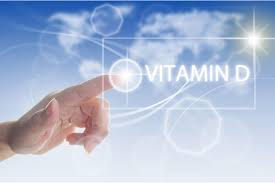
Personalized vitamin D dosing, guided by regular blood monitoring, significantly reduced recurrent heart attacks by 52% in a recent trial.
- Vitamin D (also referred to as calciferol) is a fat-soluble vitamin that is naturally present in a few foods, added to others and available as a dietary supplement.
- It is also produced endogenously when ultraviolet (UV) rays from sunlight strike the skin and trigger vitamin D synthesis.
- During periods of sunlight, vitamin D is stored in fat and then released when sunlight is not available.
- Very few foods have vitamin D naturally. The foods with the most are fatty fish (like salmon and tuna), liver, mushrooms, eggs, and fish oils.
- The amount of vitamin D one needs each day depends on his/her age.
- Vitamin D promotes calcium absorption and helps maintain adequate levels of calcium and phosphorus in the blood, which is necessary for healthy bones and teeth.
- Without sufficient vitamin D, bones can become thin, brittle, or misshapen.
- Vitamin D has other roles in the body, including reduction of inflammation as well as modulation of such processes as cell growth, neuromuscular and immune function, and glucose metabolism.
- A lack of vitamin D can lead to bone diseases such as osteoporosis or rickets. Osteoporosis is a disease in which your bones become weak and are likely to fracture (break).
- With chronic and/or severe vitamin D deficiency, a decline in calcium and phosphorus absorption by your intestines leads to hypocalcemia (low calcium levels in your blood).
- This leads to secondary hyperparathyroidism (overactive parathyroid glands attempting to keep blood calcium levels normal).
- Both hypocalcemia and hyperparathyroidism, if severe, can cause symptoms, including muscle weakness and cramps, fatigue, and depression.
- Anyone can have vitamin D deficiency, including infants, children and adults.
- Vitamin D deficiency may be more common in people with higher skin melanin content (darker skin) and who wear clothing with extensive skin coverage, particularly in Middle Eastern countries.
The India Skills Report 2026:

The India Skills Report 2026 shows India’s employability rate rising to 56.35% (from 54.81%), signalling a rapid improvement in how “job-ready” the youth are.
- The India Skills Report 2026 is an annual nationwide assessment of India’s workforce readiness, prepared by ETS, CII, AICTE, AIU and Taggd, based on surveys of students, recent graduates and employers across key sectors.
- Aim:
- To measure employability and skill gaps across education streams, sectors and regions.
- To map emerging trends in AI, gig work, digital fluency and hiring patterns.
- To help policymakers, academia and industry align curricula, training and recruitment with the demands of the future of work.
Highligts:
- Overall employability has increased to 56.35% (from ~54.8%), almost a 10-percentage point jump in about 4 years, indicating more youth are job-ready and aligned with industry needs.
- Women: 54% vs Men: 51.5% – first time in years that women’s employability overtakes men’s, especially in BFSI, education, healthcare and in Tier-2/Tier-3 cities.
- Computer Science (80%) and IT engineers (78%) top employability metrics, driven by roles in AI, data analytics, automation, cloud, cybersecurity.
India already holds a significant share of global AI talent, and AI tools are widely used in recruitment and daily work. - Industry and institutions are converging through micro-credentials, stackable certificates and experiential learning, moving towards a “skills-first” hiring culture, not just degree-based recruitment.
- Gig hiring grew ~38%, and gigs now form around 16% of all jobs, with the gig workforce projected to reach tens of millions by 2030, giving workers more flexibility and diversified income streams.
- Around 92.8% of students seek internships or hands-on exposure, especially high in Karnataka, Madhya Pradesh, Tamil Nadu, reflecting demand for real-world learning and industry projects.
- Companies plan to hire 40% more people next year (up from 29%).
- IT sector leads fresher hiring at 35% (vs 14% cross-industry last year), followed by BFSI, manufacturing, pharma/healthcare, FMCG.
- Commerce grads: employability up to 62.81% (from 55%) – driven by BFSI & fintech.
- Science: ~61%, Arts: ~55.55% – benefitting from digital and interdisciplinary roles.
- ITI: 45.95% (up from 41%) and polytechnic: 32.92% – showing gradual success of vocational skilling.
Rise in India’s Carbon Emissions:
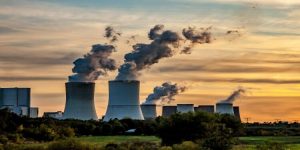
The Global Carbon Project’s 2025 assessment shows that India’s carbon emissions rose by only 1.4%, a sharp slowdown compared to 4% in 2024.
- India’s annual carbon emissions arise mainly from fossil fuel use—especially coal—making it the third-largest global emitter after China and the U.S.
- India’s carbon emissions rose only 1.4% in 2025, a sharp drop from 4% in 2024, driven by good monsoon conditions and faster renewable energy uptake.
- Worldwide fossil CO₂ emissions are projected to grow 1.1%, reaching 38 billion tonnes—pushing the remaining carbon budget for 1.5°C dangerously close to exhaustion.
- China’s emissions grew only 0.4%, supported by an unprecedented expansion of renewable energy capacity.
- India’s emissions remain coal-heavy, while global emissions from coal (+0.8%), oil (+1%), and gas (+1.3%) continue to rise.
- Only 170 billion tonnes of CO₂ remain for a 1.5°C pathway—equivalent to four years at current emission rates—making the target almost unattainable.
Singapore Introduces World’s First Green Fuel Levy:
Singapore has become the first country in the world to introduce a Green Fuel Levy on air passengers departing from the country, starting next year.The revenue generated will be used for the centralised purchase of Sustainable Aviation Fuel (SAF) to help the aviation industry cut emissions.The aviation sector produces 1.2% of global greenhouse gas emissions, yet SAF, despite being a promise, remains costly and scarce, forming only 0.3% of global jet fuel in 2024.SAF is an alternative to conventional jet fuel, produced from non-petroleum feedstocks like agricultural waste, municipal solid waste, forestry residues, and waste oils.It can be blended (10–50%) with Aviation Turbine Fuel (ATF) without modifications to aircraft engines or existing airport infrastructure.
Sahitya Akademi : Bal Sahitya Puraskar 2025
The Bal Sahitya Puraskar 2025 by the Sahitya Akademi will be held on 14th November 2025 to promote and celebrate quality children’s literature across India’s diverse languages and cultures.Bal Sahitya Puraskar is a literary award instituted in 2010 to honour excellence in children’s literature across 24 Indian languages.The author must be Indian, and the book should be an original work for readers aged 9–16, published within the last five years before the award year.Sahitya Akademi is an autonomous body, formally inaugurated in 1954 and registered in 1956 under the Societies Registration Act, 1860, to promote Indian literature. It gives 24 Literary Awards and 24 Translation Awards each year, along with the Bhasha Samman for contributions to unrecognised and classical/medieval languages. Sahitya Akademi Awards Started in 1954, these are annual awards for outstanding literary works in 22 scheduled languages, English, and Rajasthani. It is India’s 2nd-highest literary honour after the Jnanpith Award.




